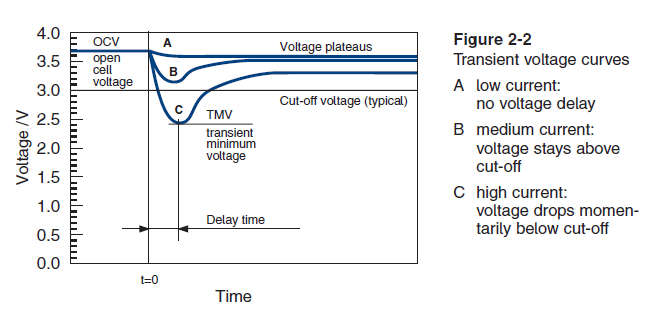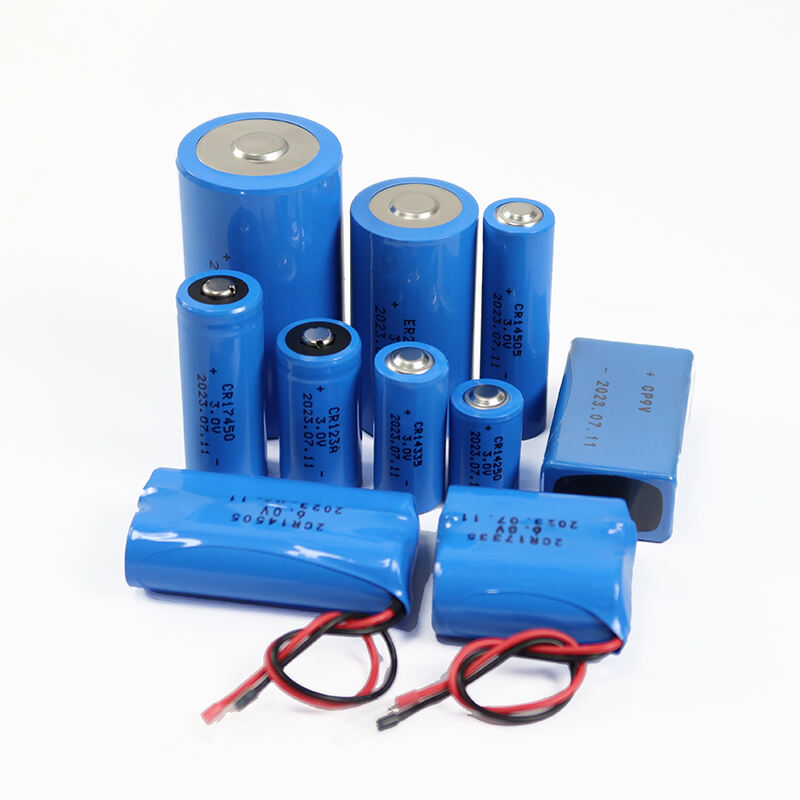News
Instructions and precautions for using lithium thionyl chloride batteries
Lithium batteries with a model number starting with ER are lithium thionyl chloride (Li/SOCl2) batteries, which are classified as lithium primary batteries according to international battery standards. Lithium primary batteries are a new type of high-energy and environmentally friendly battery with lithium metal as the negative electrode. They are non-rechargeable batteries.
1. Lithium primary batteries are non-rechargeable
Directly charging lithium primary batteries will cause the battery to explode. The probability of battery explosion is directly related to the charging time and current. 220V charging will explode instantly. 12V DC charging, the battery will explode within a few minutes. 5V DC charging without external protection components can reach a charging current of about 50mA, and the battery will explode after a few hours.
In the case of 5V voltage floating charge in the circuit, it is recommended that customers add diodes and other protection measures in the circuit to control the charging current below 10µA.
It is safe to control the charging current of lithium primary batteries below 10µA.
2. Prevent forced discharge
When several batteries are used in series, if other models or used batteries are used in the series battery, some batteries will experience forced discharge (OverDischarge). Due to the unevenness of battery capacity, some batteries will charge in the later stage of discharge, which may cause battery accidents.
To prevent the occurrence of charging, customers are advised not to assemble batteries for use.
If you want to use a single battery in combination, please contact the technicians, who will provide you with assembly solutions and assembly design services.
3. High temperature
When the ambient temperature of the lithium primary battery exceeds 100°C, the battery will explode, so you should pay attention to controlling the welding time and temperature during welding.
4. Hysteresis and points of attention
As lithium thionyl chloride batteries have a characteristic, that is, voltage hysteresis, which often causes customers to use the battery to provide high current, and the load voltage is lower than the customer's minimum limit voltage, causing the equipment to run poorly. In view of the fact that many customers underestimate this, it is necessary for us to explain the hysteresis performance of the battery in detail.

Class A: Under low current conditions, although the battery is passivated, the load will not change significantly when in use. Taking ER14250 as an example, when the current is below 1mA, the battery will not have obvious hysteresis (voltage reduction).
Category B: Under medium current conditions, if the battery is passivated, but the battery load can still be maintained above the cut-off voltage.
Taking the ER14250 battery as an example, when the current is below 4mA, the voltage of the passivated battery will drop, but generally will not drop below 2.8V.
Category C: Under high current conditions, if the battery is passivated, the battery load can easily drop below the cut-off voltage, causing the device to fail to work properly. Taking the ER14250 battery as an example, when the current reaches more than 10mA. If passivated, the load will drop below the cut-off voltage (Cut-offVoltage).
Therefore, customers need to fully understand the hysteresis phenomenon and take corresponding measures to reduce the impact of hysteresis. The following suggestions are made during actual use:
1. Consider the load size, use environment and other factors in the design stage, and select a battery model for use under medium or low current conditions.
2. The finished battery inventory time should not exceed half a year. It is recommended to activate the battery after more than half a year.
3. If the battery is installed on the device and has micro-ampere power consumption, the battery passivation phenomenon is slowed down. However, if the design current is greater than the maximum battery operating current, it is recommended to consider adding capacitors during the design phase to reduce the battery voltage drop.

V. Precautions during use
1. Short circuit is strictly prohibited, and high current charging is strictly prohibited.
2. Users are strictly prohibited from combining batteries by themselves.
3. Over-discharging, squeezing, and incinerating batteries are strictly prohibited.
4. Long-term use or heating outside the permitted temperature range is strictly prohibited (batteries have safety hazards when exceeding 100°C).
5. Strictly check the outer packaging before use. If the packaging is damaged, find out the cause and do not use it easily. When the packaged batteries are scattered, sort them out in time, seal the scattered batteries and notify the supplier.
6. It is strictly prohibited to mix and use batteries of different series and different specifications in series.
7. Soldering cannot be performed on the top of the positive and negative poles of the battery at will, and soldering on the lead-out sheet must be completed within 5 seconds.
8. During operation, the battery cannot be scattered or dropped to avoid battery short circuit.
9. After the battery is discharged to the termination voltage, it is strictly prohibited to continue using it, and the battery cannot be soaked in water.
10. Used batteries should be marked and scrapped in time, and should not be stored randomly.
11. When stripping and welding wires, do not strip the positive and negative wires at the same time, and do not connect the positive and negative wires with metal objects to avoid battery short circuit.
12. When packaging and storing surplus batteries from the production line, the batteries should be packed in the original packaging, neatly arranged, and not short-circuited with each other.
13. Surplus batteries from the production line should be stored in the original packaging. It is recommended that the battery be stored in an environment with a temperature of <25 degrees and a humidity of <70% to avoid long-term storage in harsh environments, which may cause rust and corrosion of the battery and cause leakage.
14. Requirements for battery installation and use: The positive pole of the battery cell should be placed horizontally and upward. When the positive pole is downward, part of the capacity will be unusable, and the actual utilization rate is only about 80% of the normal value.
15. Keep the battery away from children to avoid injury.
16. Scrapped batteries cannot be destroyed by themselves, and should be handled in accordance with the regulations of the local environmental protection department.
The above are the precautions for the use and operation of lithium primary batteries, which are hereby explained.


